- Home
- Robert J. Sawyer
The Oppenheimer Alternative Page 12
The Oppenheimer Alternative Read online
Page 12
“There’s a package for you.” De Silva held up a cardboard box that could have contained a single encyclopedia volume. “But before I can release it, I need to know what it says.”
Hans gestured with his slide rule; the box clearly had already been opened. “Surely you’ve looked?”
“Yes, of course.” No hint of apology. “But ...”
“Well, then? Is it in German? Many in your office must be adept at reading that.”
“No. It looks like code.”
Hans nodded. Nothing made de Silva angrier than messages to and from the scientists in code; he’d shut down Dick Feynman’s playful habit of swapping encrypted love letters with his late wife Arline while she was suffering from tuberculosis in Albuquerque. De Silva tipped the box, and five thin glass sheets slipped out, each separated from the next by a piece of tissue paper. He set them on the desktop—unlike many of the other scientists, Hans kept his working area neat and so there was plenty of room. “These lines, you see?”
Bethe’s heart skipped a beat. “Ah, yes, captain. A code indeed—but not an enemy one. It is the code of nature.”
De Silva frowned. “And what does it mean?”
“It means,” said Hans, grinning as he studied them, “that I am right, and the irascible Mr. Tilden will have to eat his hat.”
#
When work at Los Alamos began, General Groves had tried to enforce his compartmentalization notion: each man knowing only what he needed to in order to do his job. But from the outset Oppie had insisted on a weekly colloquium at which the senior scientists could meet for freewheeling discussions of technical issues. The strategy had succeeded: often a specialist in one area brought a useful new insight to work in another.
The task of organizing the colloquia, which were held Tuesday evenings in the base’s theater, had fallen to Edward Teller. He was happy because it gave him frequent chances to shoehorn mentions of his thermonuclear dreams into whatever the topic of discussion was, and Oppie was happy because it was something actually useful that Teller could do.
Now that the bombs had been dropped on Japan, proving both the uranium-gun and plutonium-implosion designs, there weren’t many big technical matters left to discuss, and attendance at the colloquia had dwindled. Most of the scientists, eager to secure jobs for the 1945-46 academic year, had already left the mesa. Still, Oppie noted, this evening the top minds had come, including Enrico Fermi, Hans Bethe, Dick Feynman, Bob Serber, and Luis Alvarez.
Teller called the group to order. “Tonight we shall speak of—”
“Let me take a wild guess,” interrupted Feynman, seated in the second row. “Fusion, perchance?”
Bethe and Serber, always good-natured, both laughed, and even Teller smiled. “Yes, but perhaps some of you will be relieved to know that I plan to make no reference to the super. Rather, I wish to talk about the sun.”
“With Groves as the Father and Oppie as the Holy Ghost?” quipped Feynman.
“Not the son of God,” said Teller, still smiling. “The sun up in the sky.”
“So much for Trinity,” replied Feynman, throwing up his hands in mock frustration, and again there was some laughter.
“I have been studying solar spectra,” Teller said, taking back control. “The sun, after all, is little more than a giant fusion pile. Of course, our friend Hans has also explored this area.”
“I took a shine to the work,” said Bethe, who was always inordinately pleased with himself when he could make a pun in English. His 1939 paper “Energy Production in Stars” was widely considered one of his best.
“Yes,” continued Teller. “But Hans, who captured his solar spectra before the war, got results different from the recent plates I’ve been working from, which were provided by the Mount Wilson and McMath-Hulbert Observatories. I’ve also now checked some older plates, predating the ones Hans was working from. Have a look.”
In preparation for this colloquium, Teller had gotten Oppie to have the base’s photo lab make a slide showing three different sets of solar spectra. He slid it into the Kodak projector and turned it on. Everyone looked at the canvas screen hanging from the ceiling. The image showed three gray-scale horizontal bars interrupted by vertical lines of various degrees of darkness. Even at a glance, it was obvious that the top and bottom ones were pretty much the same, but the one in the middle was more complex. The top one was labeled 1929; the middle, 1938; and the bottom, this year, 1945.
There was a murmur through the room. “You’re pulling our legs,” said Fermi. “The one in the middle isn’t our sun; it’s got to be an F-class.”
“Oh, yes, it is our sun,” Bethe assured him, from the third row. “Absolutely; I took that spectrograph myself.”
“But then how do you reconcile it with the ones taken before and after?” demanded Fermi. “Yours has strong carbon-absorption lines, and there’s none to speak of in the upper and lower ones.”
“Puzzling, isn’t it?” said Teller. “Of course, we’ve only known what stars are made of for twenty years now.” In 1925, Cecilia Payne-Gaposchkin determined that stars are composed almost entirely of hydrogen and helium; prior to that, it was assumed that, although the sun was obviously much hotter, its composition was similar to earth’s, since they’d presumably both been born out of the same coalescing cloud of matter. “And of those twenty years almost no data has been added in the last six, since the war broke out in Europe.” He looked out at the small group. “Now, obviously, if we are ever to reproduce fusion here on earth, we must correctly understand how it occurs in nature. I have recently developed a set of equations that I believe accurately describes the process, but they do not account for Hans’s spectra, or, as I’ve now determined by checking with various experts, any solar spectrograph taken between January and April 1938. Before that and after that my proton-proton equations work but during that period something happened to the sun, causing it to temporarily heat up enough to undergo C-N-O-cycle fusion.”
“If the sun warmed up that much, surely we’d know,” said Oppie, who was seated in the front row. He turned in his wooden seat to allow those behind to see him. “There’d be an effect on earth’s climate.”
“And there was,” said Teller. “My friend Johnny von Neumann at the Institute for Advanced Study has become obsessed lately with predicting the weather. Toward that end, he’s been studying past meteorological records. He says that period was indeed warmer than normal to a statistically relevant extent, although the impact was felt more in the southern hemisphere than up here.”
“Which makes sense,” said Alvarez, “since the southern hemisphere faces the sun more fully in our winter.”
Teller nodded. “Exactly. That was also an exceptional winter for auroras. So, we have an interesting anomaly before us. The sun was feverous—running a high temperature—for a few months. The question is why?”
Oppie had the advantage of having seen both spectra before, and he’d been chewing over the issue ever since Einstein’s letter had arrived. Still, it wasn’t until just now, when he saw the three spectra stacked up like this, that it all went click in his brain. “So,” he said, “the problem isn’t with Teller’s math.”
Teller’s voice was smug. “Exactly!”
“And it’s not with Bethe’s plates, either,” continued Oppie. He had everyone’s attention; still, he rose. “The problem,” he said, “is with the sun. And I think I know what it is.”
Silence, save for the rumbling of the room fans and a hiss from the slide projector.
“How do you mean?” asked Bob Serber at last.
Oppie gestured at the screen. “Look at it, Bob. You and I wrote the paper saying Lev Landau was wrong in proposing that the sun had a neutron core.”
“Landau isn’t the only one who proposed that,” said Bethe. “Fritz Zwicky said the same thing, and said it first.”
Oppie waved a ha
nd dismissively—he couldn’t stand Zwicky—and kept his gaze on Serber. “And we showed that such a core could make up no more than one-tenth of the sun’s mass. Above that and it would be ...”
“... unstable,” lisped Serber, and Oppie could see the light dawning in his old friend’s eyes.
“Exactly. An instability that would require resolution—a resolution that would likely raise the temperature of the sun for a brief period.”
Bethe was nodding now. “The period during which I did my spectroscopy studies and detected C-N-O fusion as the main engine powering the sun.”
“Right,” said Oppie. He puffed his pipe. “But that instability would die down with—”
“With the ejection of mass from the core,” chimed in Teller. “The degenerate matter couldn’t be maintained if the quantity of it was too little, and so it would burst forth.”
“But the sun is big,” said Oppie. “And whatever neutron core it had—had, past tense—was small, maybe even as small as the one-thousandth of a solar mass that Landau would have allowed, but certainly, given that it’s proven unstable, somewhere between Landau’s 0.001 solar masses and Bob and my 0.1. But even at a tenth of a solar mass, if it’s degenerate matter, it would be tiny—just a few kilometers across at the heart of the sun, which has a diameter of one-point-four million kilometers.”
“A neutron core basically forms in an implosion,” said Teller. “Like Kistiakowsky’s plutonium core at the heart of a Fat Man—”
“But after the implosion comes a massive explosion,” said Serber, “and that hasn’t happened.”
“No?” said Oppie. “I think it has. Bob, you know this, but some of you others might not. My Ph.D. thesis at Göttingen was Zur Quantentheorie kontinuierlicher Spektren”—On the Quantum Theory of Continuous Spectra—“and it concentrated on the opacity of stellar surfaces to their internal radiation. The sun’s visible surface is the photosphere, and what’s beneath it is hidden. But if we assume the temporary temperature increase that allowed C-N-O fusion was caused by energy released by the explosion, and then calculate—”
Through all this, Hans Bethe, the world’s greatest expert on solar fusion, had been quietly working his slide rule. “But if we calculate,” Bethe said, speaking firmly as was his wont when the subject was physics, “the likely size of the neutron core per Zwicky’s, Landau’s, and Oppie’s and Bob’s work, and the amount of temperature increase I detected, along with your own opacity research, Oppie, we arrive at a figure for when the outwardly exploding formerly degenerate material should be able to complete traversing the bulk of the sun’s body and at last hit the photosphere from behind.”
“And?” asked Serber.
“Plus or minus?” said Bethe. “Give or take? I’d say ninety or so years—from when the transient solar-temperature anomaly began, that is, back in 1938. Say eighty-two or so years from now.”
“Which is 2028,” said Serber.
“Somewhere in there, yes: 2027, 2028, 2029,” agreed Bethe.
“And how much of a kick will it have left by then?” asked Serber.
Bethe went back to his slide rule. Oppie pulled out his own. Teller started writing on the blackboard that was up on the side of the stage, next to the screen, and others began figuring with pencil and paper.
“A lot,” declared Bethe, with the air of the first kid to finish the exam.
“A hell of a lot,” said Oppie a moment later.
“Fuck,” said Serber. “Did anyone else get an exponent of six?”
“Six, yes,” called out Fermi.
Oppie felt his chest constricting. But his own slide rule was yielding confirming results. “With the sun’s surface—its photosphere, the visible disc—opaque to what’s happening within, that whole layer, the entire photosphere, will be pushed outward from behind and be ejected.”
“Ejected ...” repeated Alvarez as if making sure he’d heard correctly.
“Exactly,” said Oppie. “The photosphere has an effective temperature of 5.8 thousand Kelvin, but its expulsion will carry the surrounding corona with it, and that has a temperature of one million Kelvin. Now, yes, the ejected shell will cool as it expands, but it will be hot enough to make molten the surface of any rocky body out to ...” He moved the slide along the stock and then slid the glass cursor with its blood-red hair line until he had the answer: “... about one-point-two astronomical units.”
“By definition,” Alvarez said ominously, “earth is at one A.U.”
“And so ...” said Fermi.
“And so,” continued Oppie, “earth will be destroyed by the superheated solar ejecta; our moon, too, of course. And both inferior planets.”
“Mercury and Venus,” supplied Teller.
“What about Mars?” asked Bethe.
“How far out is it?” asked Alvarez. “One-point-four?”
“More like 1.5,” said Oppie. “Yes, it should survive unscathed, although it’ll get a lovely light show as the attenuated plasma shell crosses its orbit.”
“The surfaces of Mercury, Venus, earth, and the moon all destroyed,” said Teller, facing the room again, his voice tinged with shock; this was devastation on a scale vaster than even he was used to contemplating.
“Exactly,” said Robert. “And our oceans boiled away, all by approximately the year 2028. After that, the sun will settle down and continue to shine steadily, as it always has, but the habitable surface of the earth will be reduced to slag.”
“Venus might have life,” said Bethe. “I don’t imagine anything intelligent, but, still, to lose another—what’s that word? Another ecosystem. We should send ships there, try to gather specimens.”
“For Christ’s sake, Hans,” said Alvarez. “We’re going to lose this ecosystem.
Bethe nodded, then turned to Robert. “But we’re working largely from figures in your papers, Oppie. Are you sure about them? Your calculations—”
“Are not always correct,” conceded Oppie. “I invite you all to prove me wrong. Nothing would make me happier, but ...”
He took another draw on his pipe, and so Feynman finished for him. “But if you aren’t wrong, the human race has less than one hundred years, and then—”
“And then,” said Oppie, his heart pounding, “the sun itself will become the destroyer of worlds.”
Chapter 18
The enemy has begun to employ a new and most cruel bomb, the power of which to do damage is incalculable. Should we continue to fight, it would not only result in an ultimate collapse and obliteration of the Japanese nation but also would lead to the total extinction of human civilization.
—Hirohito
The Japanese had surrendered two weeks ago, on August 15, 1945, although the formal ceremony, to be held aboard the U.S.S. Missouri, was still several days away. In the end, they’d received the only thing they’d wanted since first making overtures to surrender a year ago, in the summer of 1944: Hirohito, their divine Emperor, would retain the Chrysanthemum Throne. No other solution had ever been possible: the post-war world required a functioning domestic government on the Home Islands. But Truman had continued to insist on unconditional surrender, not making the Hirohito concession until after the two American atomic bombs had been dropped—after the new world order had been set.
Oppie had been surprised when Edward Teller invited him to go for a walk in the late-August heat; Robert thrived in it, but the stocky Teller was built for cooler climes. Oppie’s eyes needed no more shielding than the brim of his hat, but Teller had on sunglasses that were the same dark green as the material that had come to be called “trinitite,” the fused-sand glass that crusted the surface of the Trinity crater.
They walked slower than Oppie normally would. It wasn’t that he was that much taller than the Hungarian; rather, it was that Edward had an artificial foot, the natural one having been lost in an accident when he was twenty. Op
pie had great sympathy: his own mother had been born with only the stub of a hand and wore a mechanical clamping glove throughout her adult life.
Teller wiped his wide brow with his blue shirt sleeve as they ambled down the dirt road from the technical area, then he gestured to indicate the whole mesa. “We have here the greatest collection of—yes, I’ll use the word—geniuses ever assembled. What was it you called us, Oppie?”
The unherdable cats, thought Robert. But what he said was, “The Luminaries.”
Teller’s voice was low, like the rumble of a freight train at night. “Exactly! The Luminaries! Who better than us to solve such a problem?”
Oppie shook his head. “Solve it? The world is coming to an end. It’s division by zero; there’s nothing to solve.”
“You were born here in the States, right?”
Oppenheimer stepped over a hole in the dirt road and frowned at the seeming non sequitur. “In New York City, yes.”
“That makes you an aberration. Think of our colleagues here. Like so many physicists, I am from Budapest. Bethe is from Strasbourg. Fermi? Rome—and Segrè, Tivoli. Peierls hails from Berlin, and Fuchs also somewhere in Germany, I imagine.”
“Yes,” said Oppie. “So?”
“We are refugees, immigrants: when conditions became untenable in our homes, we left.”
“Left?” repeated Oppie. “Weren’t you listening? There’s nowhere to go. Earth will be destroyed.”
“But not Mars. And there are moons of Jupiter, Saturn, Uranus, and Neptune. Did you not read that last year Kuiper spectroscopically detected an atmosphere around Titan?”
“We can no more get to Saturn’s moons than our own,” said Oppie.
“We have the better part of a century. Look at Germany’s V-2 rockets.”
“Yes?”
“Surely continued development of such technology could give us vehicles capable of leaving earth’s gravity.”
“Missiles rejiggered for space travel? A long shot at best.”

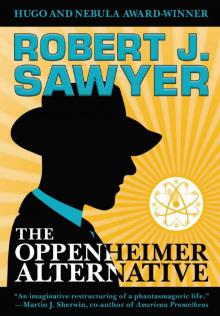 The Oppenheimer Alternative
The Oppenheimer Alternative Factoring Humanity
Factoring Humanity The Shoulders of Giants
The Shoulders of Giants Stream of Consciousness
Stream of Consciousness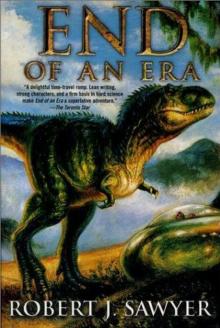 End of an Era
End of an Era The Terminal Experiment
The Terminal Experiment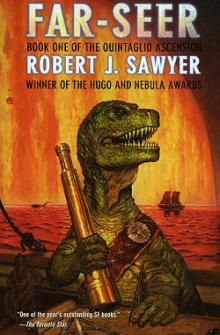 Far-Seer
Far-Seer Mindscan
Mindscan You See But You Do Not Observe
You See But You Do Not Observe Star Light, Star Bright
Star Light, Star Bright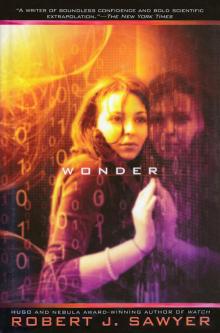 Wonder
Wonder Wiping Out
Wiping Out Flashforward
Flashforward Above It All
Above It All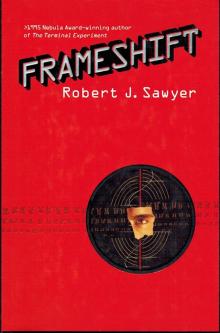 Frameshift
Frameshift The Neanderthal Parallax, Book One - Hominids
The Neanderthal Parallax, Book One - Hominids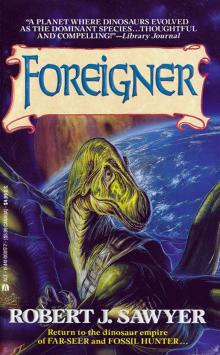 Foreigner
Foreigner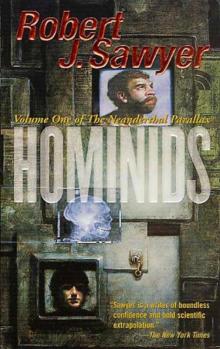 Neanderthal Parallax 1 - Hominids
Neanderthal Parallax 1 - Hominids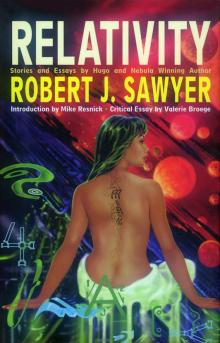 Relativity
Relativity Identity Theft
Identity Theft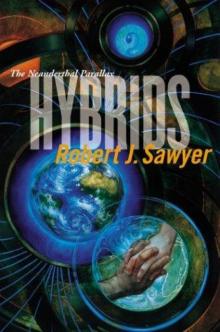 Hybrids np-3
Hybrids np-3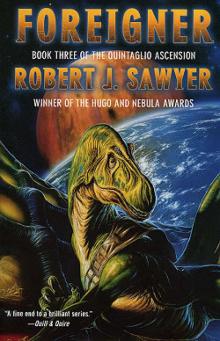 Foreigner qa-3
Foreigner qa-3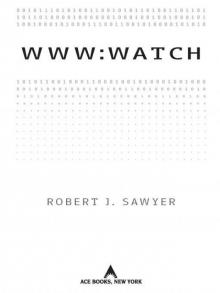 WWW: Watch
WWW: Watch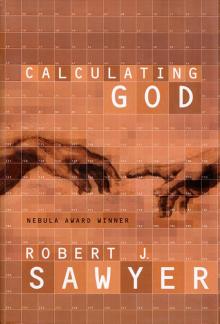 Calculating God
Calculating God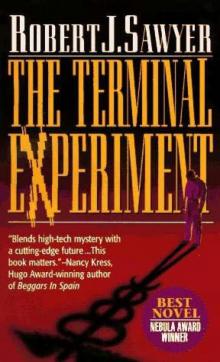 The Terminal Experiment (v5)
The Terminal Experiment (v5) Peking Man
Peking Man The Hand You're Dealt
The Hand You're Dealt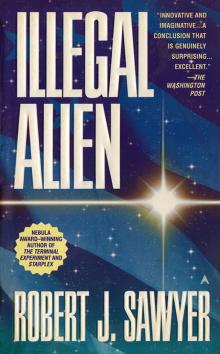 Illegal Alien
Illegal Alien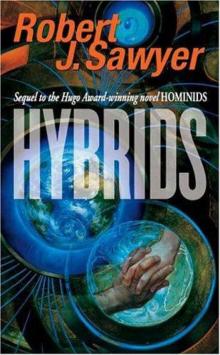 Neanderthal Parallax 3 - Hybrids
Neanderthal Parallax 3 - Hybrids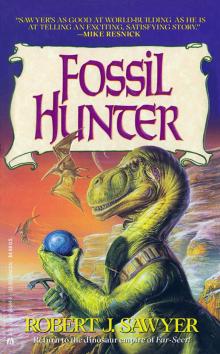 Fossil Hunter
Fossil Hunter WWW: Wonder
WWW: Wonder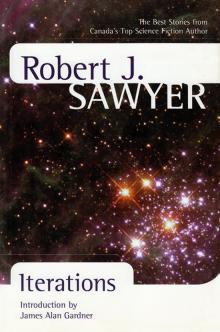 Iterations
Iterations Red Planet Blues
Red Planet Blues Rollback
Rollback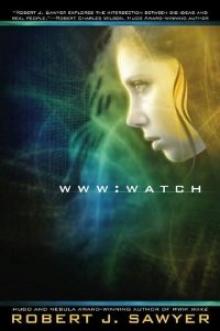 Watch w-2
Watch w-2 Gator
Gator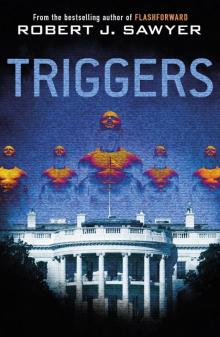 Triggers
Triggers Neanderthal Parallax 2 - Humans
Neanderthal Parallax 2 - Humans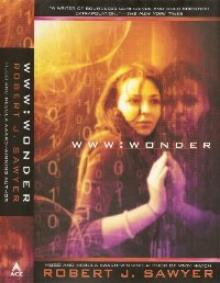 Wonder w-3
Wonder w-3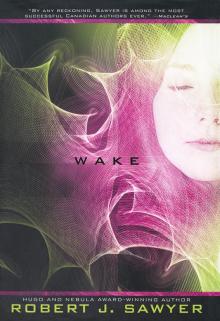 Wake
Wake Just Like Old Times
Just Like Old Times Wake w-1
Wake w-1 Fallen Angel
Fallen Angel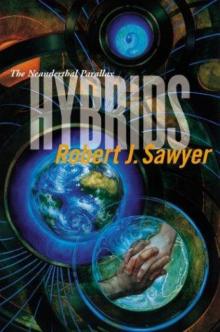 Hybrids
Hybrids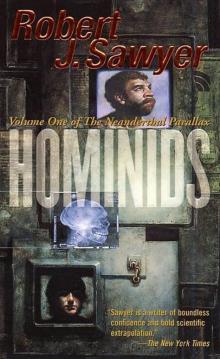 Hominids tnp-1
Hominids tnp-1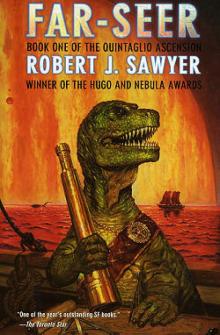 Far-Seer qa-1
Far-Seer qa-1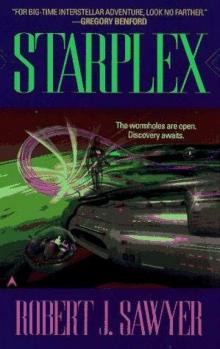 Starplex
Starplex Hominids
Hominids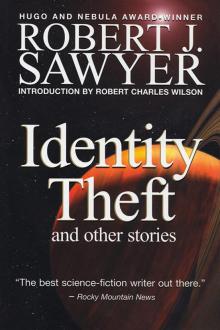 Identity Theft and Other Stories
Identity Theft and Other Stories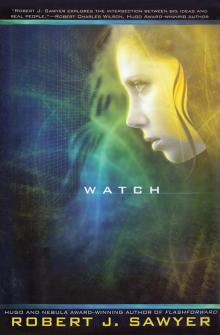 Watch
Watch Golden Fleece
Golden Fleece Quantum Night
Quantum Night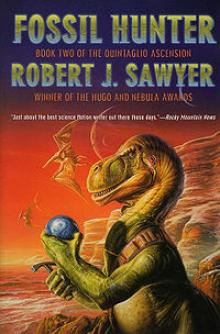 Fossil Hunter qa-2
Fossil Hunter qa-2 Humans np-2
Humans np-2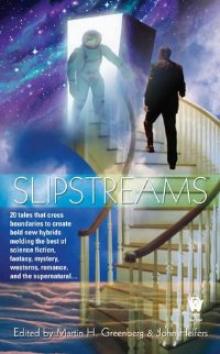 Biding Time
Biding Time